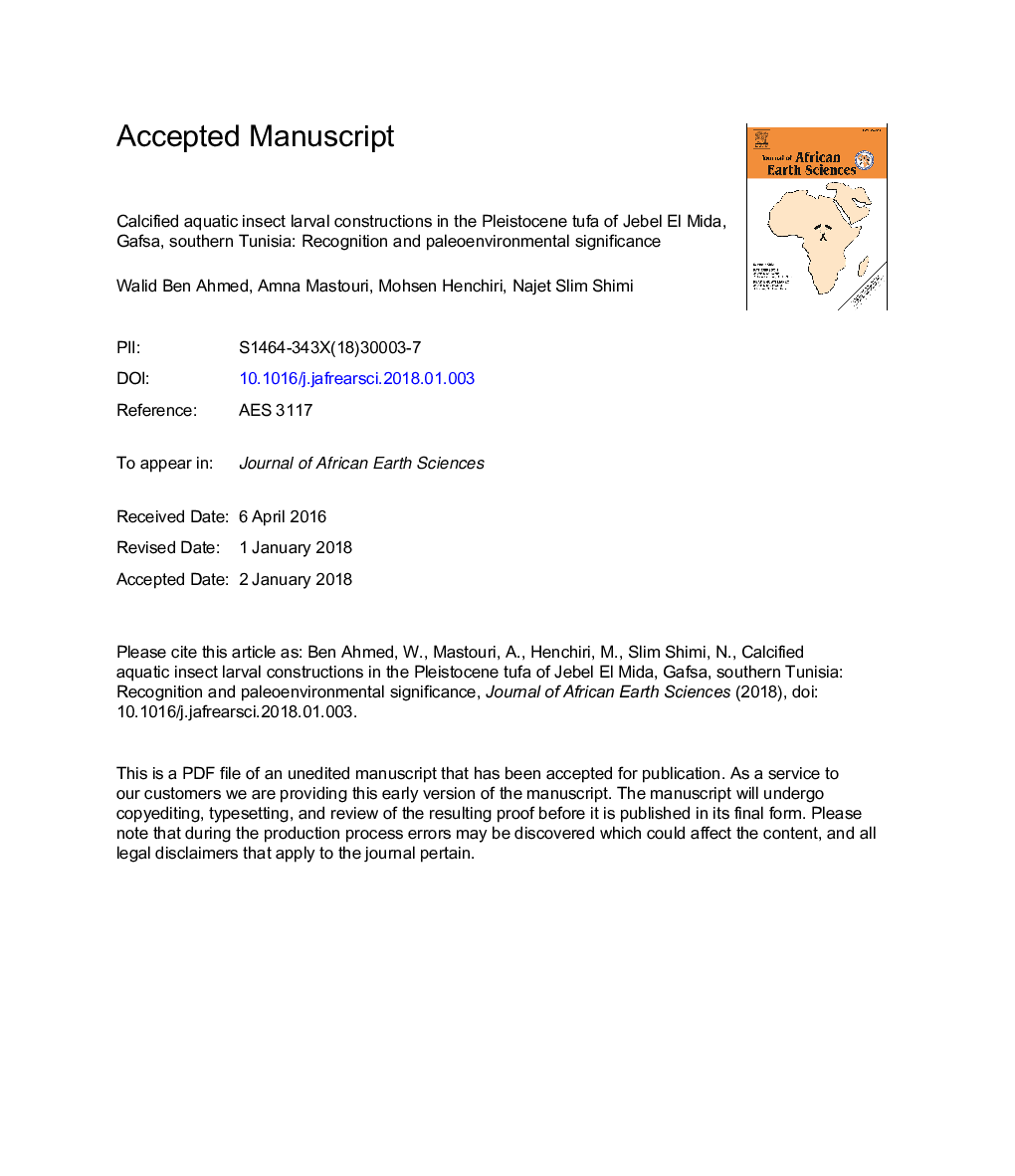| Article ID | Journal | Published Year | Pages | File Type |
|---|---|---|---|---|
| 8913567 | Journal of African Earth Sciences | 2018 | 37 Pages |
Abstract
Calcified aquatic larval cases were recognized and identified in the Pleistocene tufa masses of Jebel El Mida, Gafsa, southern Tunisia. These larval constructions belong to three main insect families: caddisflies (Trichoptera, Hydropsychidae), midges (Diptera, Chironomidae) and aquatic moths (Lepidoptera, Pyralidae) that inhabited tubes in the tufa and spun nets. Each insect community has its distinctive characteristics of larval constructions that allow their recognition. The larval constructions recognized comprise fixed and portable (for caddisflies) dwelling cases and silken retreats and feeding capture nets. These last-mentioned are almost completely eroded and only remnants are preserved. The spatial distribution of these larval cases within the tufa is not random but, rather imposed by some specific paleohydraulic conditions. It's the reason why aquatic insect larval constructions are considered as prominent tool for the reconstruction of tufa and travertine depositional environments. Chironomid fixed dwelling cases (diameters range from 0.6â¯mm for clustered tubes to 3â¯mm) indicate the deposition of tufa under lotic (flowing) or lentic (standing) water conditions. The later hydraulic condition is shared with hydropsychids with fixed retreats (0.2-4â¯mm in diameter). Portable case-building caddisflies (case length ranging from 5 to 20â¯mm, and diameter from 3 to 5â¯mmâ¯at the cephalic end) prefer lentic conditions and are almost completely missing in high-energy flowing water locations that are preferred by pyralids (tubes are between 5 and 10â¯mm long and 3â¯mm in diameter). These insect families benefit from inhabiting the tufa by the availability of construction materials of their cases and the necessary space for their development.
Related Topics
Physical Sciences and Engineering
Earth and Planetary Sciences
Geology
Authors
Walid Ben Ahmed, Mohsen Henchiri, Amna Mastouri, Najet Slim S'himi,
